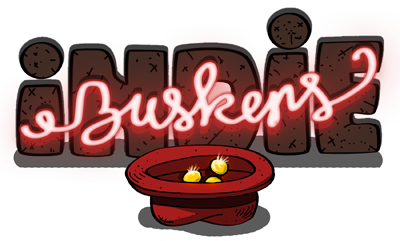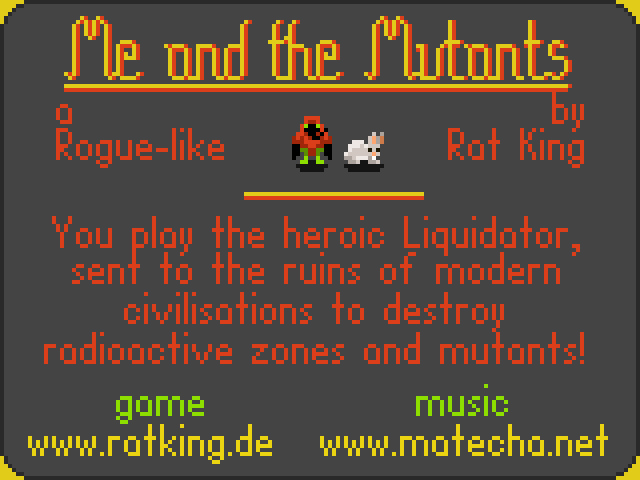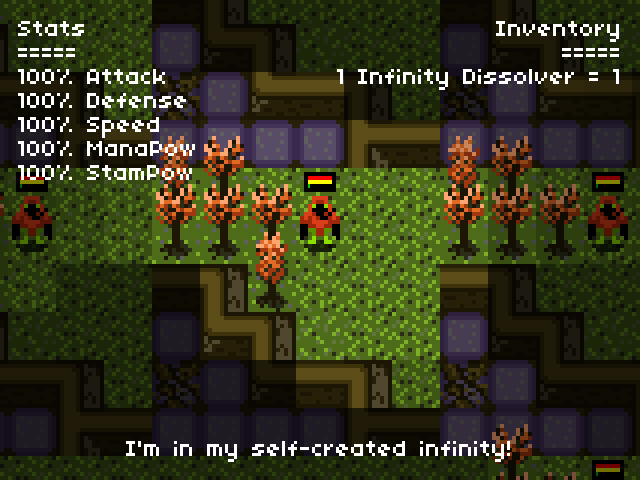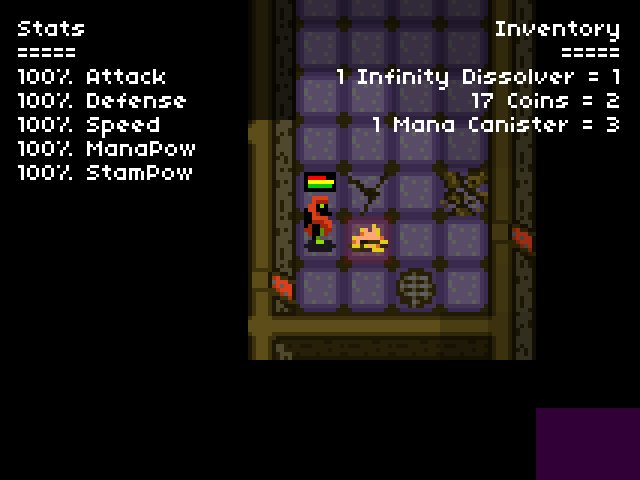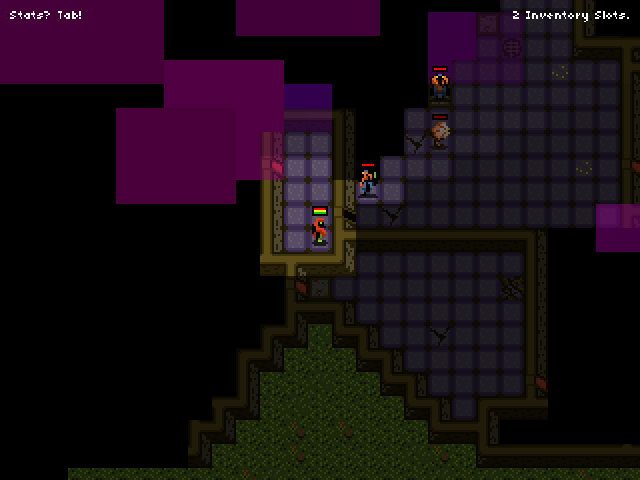(The original posting is in German, on Indie-Inside.)
Foreword - Sale Week
Last week (March 10th to 18th) the annual 7-Day-Roguelike Challenge took place – the event for which Pitman was developed last year. That's why our yellow dwarf celebrated his birthday that week, and because the 7DRL Challenge always gets some attention, we decided to link it together to a sale.
Our roguelike is available at four PC distribution platforms: Indievania, IndieCity, LittleIndie and Desura (+ the AppStore). So we reduced the price to $0.95 / €0.79 every day at one or two sites for three days each. We also offered a few goodies or articles on our website daily.
In retrospect this sale was not only a good marketing campaign, but also very helpful to find out about the strengths and weaknesses of our four platforms.
Of course it would have been great to have self-distribution on our own website additionally (as it was indeed the place we referenced most times in our sale), but unfortunately this is planned for our web relaunch in the near future and wasn't available yet.
Indie Distribution
The four platforms are characterized mainly by low barriers for an entry; i.e. you send in a game, it gets checked and reviewed, and often it goes straight to the market with no major problems (except for Desura, where we had minor troubles with the file upload).
So if the splendid Steam Store is denied to you or you like to put smaller titles (e.g. jam games) outside of your own website or offer your product indie-compatible – you hit the right spot here.
Of course, Steam is the largest provider and has the advantage of a high number of users. However, most indie platforms – like many indie developers as well – often only have other developers or the not-so-big indie scene as players and multiplicators. Platform owners often expect that the developers bring the players (aka buyers) already with them and thereby keep the cash flowing. Thus, the scene just fertilizes itself and the few larger indie platforms remain hidden from the "normal" players.
Desura might be known by linking up with the Indie Royale bundles, since you can load their games with Desura keys. But for most games Steam keys are also available ...
In the future it would be nice other platforms having a chance next to Steam, as in my eyes monopolies are never positive. While Steam guarantees a high quality, the reviewing process is too opaque for many developers. Desura or IndieCity for example also allow the presentation of a different kind of games that would get (even) less attention.
Okay, enough about my plea to not only promote Steam, but to aim for at least another platform. However, you have to be aware that the effort you put into marketing for a platform does not always bring about the expected profit.
I was wondering what is used by other developers and what platforms do not work (anymore)?
E.g. Play Greenhouse by Penny Arcade has folded, unfortunately: "Apologies for the inconvenience, but Greenhouse is temporarily offline for some ... upgrades. We'll be back soon! " – the last Twitter entry is from 2010.
Indie distribution compared
Little Indie

- since August 2011
- 13 games + 3 new releases soon
- wide price range and very different genres
- DRM or DRM-free / client
- Little Indie highly values achievements
- Cloud-functions, matchmaking, multiplayer, lobbying (direct server selection) are planned
- regular news on Facebook and Twitter about new features on the client and current titles and sales
- bank transfer, Paypal
- from the review of the game until the start: a few days
- contract
- upload via SVN / SSH
- demo on the platform
- sales and updates are set by operator
- revenue share is negotiable
- payout: quarterly from € 20
Pros:
- close contact with the operator, responds quickly
- you don't go down in the masses of games yet
- individual compilation, bundles, Alpha Funding, Keys
- Forums, blogs are available
- Support Center (client-> developers) for bugs / problems
Cons:
- very low popularity
- the project, images, demos, page texts can not be adjusted by oneself via an interface
- Windows-only
- only rudimentary backend for developers (sales / hits)

Indie City

- in planning since 2010, started publicly since 2011
- >140 Games
- most expensive game: Cardinal Quest € 10.00
- very different, small, cheap games
- DRM / client
- regular news on Facebook and Twitter about new features on the client and current titles and sales (a Twitter account for players and developers each)
- there is no payout yet (tax law issues are being resolved)
- revenue share: 25% to platform (currently); with integration of achievements / leaderboard system only 15%
Pros:
- adaptive recommendation system in the client
- very good support, chat (IRC) and forums
- edit everything through the backend: project settings, updates, pricing, etc.
- do occasional promotions for developers (marketing week, pimp-up-your-media week)
- Tweeting and blogging very often
- relatively simple upload system: upload one EXE file together with game data in a ZIP, gets automatically wrapped into an installer
- Demo upload possible
Cons:
- many features are still in beta or not available at all (but marked with some yellow post-its)
- low popularity
- Windows-only
- payment via Credit Card only
- Annoying limitation of size (and number) of the images when setting up the project
- very simple statistics, no breakdown

Indievania

- since 2011
- >250 Games
- extremely diverse genres, quality and prices
- DRM-free / direct download
- regular news on Facebook and Twitter about current titles and sales
- payment via PayPal
- authorization of the game: only a few days
- upload through Amazon S3, no restriction on upload format
- money is transferred immediately after purchasing to the developer (no platform costs)
- responded late to the announcement of the sales, but then we were listed in“featured” and “specials”
Pros:
- download games without client
- Very good back-end, relatively detailed statistics
- customers may pay more; pledge, pay-what-you-want
- bundles, keys
- sale section for special sales in the backend + Twitter announcement (at least in the case of Pitman)
- Windows / Mac / Linux / Android / PSP / keys for Steam
Cons:
- relatively low level of publicity (during our sales week we got some more buyers, though)
- Paypal costs way too much for cheap games, when the micropayment option isn't used / cannot be used
- no demo upload to the platform

Desura

- since 2009
- from very cheap to expensive higher-quality games
- DRM / client
- regular news on Facebook and Twitter on current titles and sales
- Paypal, Visa, MasterCard
- transfer from €500 (minus fees)
- platform fee: 30%
- sales must be requested
Pros:
- substantial increased sales opportunities by IndieDB connection
- biggest indie sales platform (after Steam)
- very good connection to the devlog system IndieDB and modding counterpart ModDB
- linked to Indie Royale
- Alpha funding possible, in own category
- Demo can be uploaded
- Windows / Mac (limited) / Linux
- very detailed backend, with very good statistics
- referrer bonus as soon as buyers come from your own website
Cons:
- 30% share / payout with minimum of €500 is a hurdle for smaller games
- relatively complicated upload system for Mac and Windows: Windows / Mac / demo must be uploaded in two versions (I.e. 6 different files that need to be uploaded when doing an update of the game); purchase link in the demo must lead to Desura

